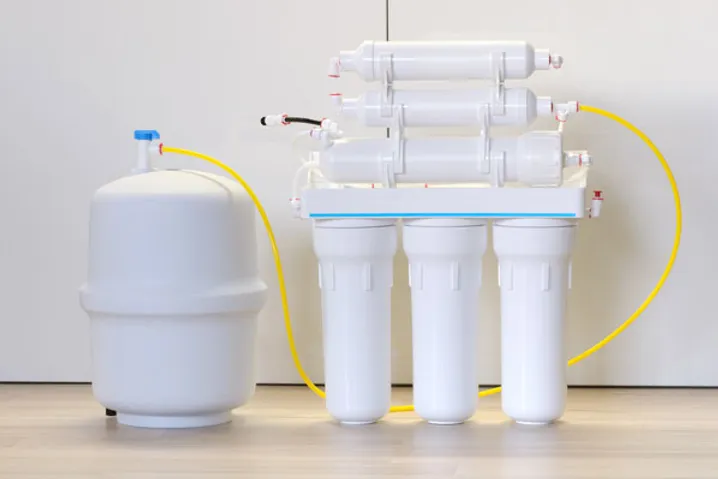Reverse Osmosis Water Filtration
Reverse osmosis (RO) systems force water, under pressure, into a module that contains a semipermeable membrane and a number of other filtration steps. A typical RO system has a prefilter designed to capture larger particles, chlorine, and other substances; a semipermeable membrane that captures more contaminants; an activated carbon filter that removes residual taste, odor, and some organic contaminants; and a storage tank to hold the treated water for use.
Whole-house (point-of-entry) RO systems exist, but they are more commonly installed near the point-of-use, such as on a countertop or under a sink. They’re great for treating water for cooking and drinking, but they don’t usually produce large amounts of treated water — more like 3 to 10 gallons a day. For that reason, typically people choose to install RO-treated faucets in the most popular areas of the home such as kitchens and bathrooms, as opposed to installing it for every drinking tap.
Just like any other kind of filter technology, RO systems require regular maintenance. That includes periodically replacing the unit’s prefilters, post-filters, and membrane modules.
Whole House Water Filtration & Softening
In-home water treatment provides the final barrier to prevent contaminants or health hazards from being ingested by you, a family member or pet. It can also address the impurities that lend an unattractive taste, smell, or appearance to your drinking water.
The staff at Texas Water House have over 75 years of experience treating water in North Texas, and several members of the company serve on the board of directors for the Texas Water Quality Association (TWQA).
Our main focus is treating the water coming into your home and creating the purest and best quality water you can get - just like it was intended to be by mother nature.



